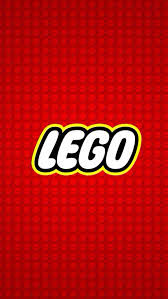
From Mess to Mastery: How LEGO Engineered an ERP Turnaround
Introduction: When Innovation Meets Operational Reality
In the early 2000s, LEGO globally recognized for its creative products was facing operational collapse. Despite strong brand equity and product demand, the company struggled with internal inefficiencies, ballooning costs, and fragmented systems. Its core challenge wasn’t product related. it was systemic.
LEGO’s recovery is now widely regarded as a benchmark in digital transformation, and ERP was central to that success.
This case study offers a practical, strategy-driven perspective on how ERP - when aligned with business priorities, can move an organization from operational chaos to scalable excellence.
The Challenge: Growth Outpaced Systems
By the late 1990s, LEGO had expanded aggressively into new business lines, including theme parks, media ventures, and new product ranges. However, the company’s internal systems and processes failed to keep pace with this diversification.
Key pain points included:
- Disjointed IT systems across business units, limiting visibility
- Inaccurate forecasting and poor demand planning
- Inefficient inventory management, leading to high holding costs
- Lack of process standardization across global operations
By 2003, LEGO reported a financial loss of over $300 million. The symptoms were clear but the root cause was deeper: an operational model unsupported by coherent systems or data.
The Strategy: ERP as an Enabler, Not Just a System
LEGO resisted the temptation of a rapid technical fix. Instead, leadership took a measured, strategic approach viewing ERP not as a standalone IT initiative, but as a business transformation lever.
Four key strategic decisions defined their ERP journey:
1. Refocus and Realign
LEGO paused non-core expansion to stabilize internal operations. This involved halting new ventures, refocusing leadership, and shifting the organizational mindset from product-first to operations-first.
2. Choose the Right Partner
The company selected SAP as its ERP platform, not for features alone, but for its capacity to standardize processes, integrate global operations, and provide data-driven decision support.
3. Simplify Before Automating
Rather than digitizing broken workflows, LEGO prioritized business process reengineering. The focus was on simplification and removing layers of unnecessary complexity before deploying the system.
4. Invest in Change Management
Change was not imposed from the top down. Cross-functional teams were formed early. Training, engagement, and stakeholder ownership were built into every phase of the ERP rollout.
The Impact: Measurable Business Outcomes
The payoff from LEGO’s strategic rebuild was profound, not just in numbers, but in long-term capability.
Tangible results included:
- Forecast accuracy improved by more than 50%, enabling better production planning
- Inventory costs were reduced, freeing up working capital
- Reporting and financial transparency were enhanced across regions
- Time-to-market for new products accelerated due to standardized processes
By 2015, LEGO was recognized as the most profitable toy company in the world, built on a robust and scalable ERP foundation
“ERP doesn’t fix complexity, it amplifies it. LEGO’s success came from simplification first.”
What ERP Professionals Can Learn from LEGO
1. ERP Must Be Business-Led
Technology only delivers ROI when it directly supports business goals. LEGO succeeded by aligning ERP decisions with clear strategic outcomes, not just technical aspirations.
2. Simplification is a Prerequisite
ERP does not fix complexity, it reveals and amplifies it. LEGO understood this and redesigned its processes before automating them.
3. Change Management is Non-Negotiable
Even the best systems fail without adoption. LEGO made training, communication, and stakeholder ownership a continuous priority. Not an afterthought.
4. Transformation Takes Time
LEGO’s rebuild spanned several years. Patience, executive sponsorship, and disciplined execution were key to avoiding short-termism.
Conclusion: ERP as a Foundation for Scalable Growth
LEGO’s story reinforces a critical message for organizations undertaking ERP initiatives: ERP is not just a software project, it’s an enterprise-wide transformation.
The company’s success was not rooted in any one tool or vendor, but in its approach: strategic alignment, process clarity, and people-centric change.
For ERP leaders, consultants, and IT decision-makers, this case underscores the value of deliberate planning, cross-functional engagement, and long-term commitment.
If your organization is navigating ERP complexity, consider this: the path to mastery begins not with speed, but with structure.
